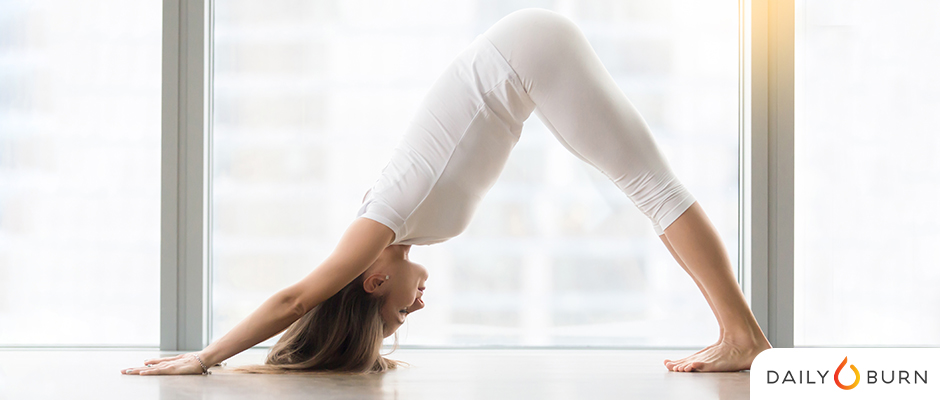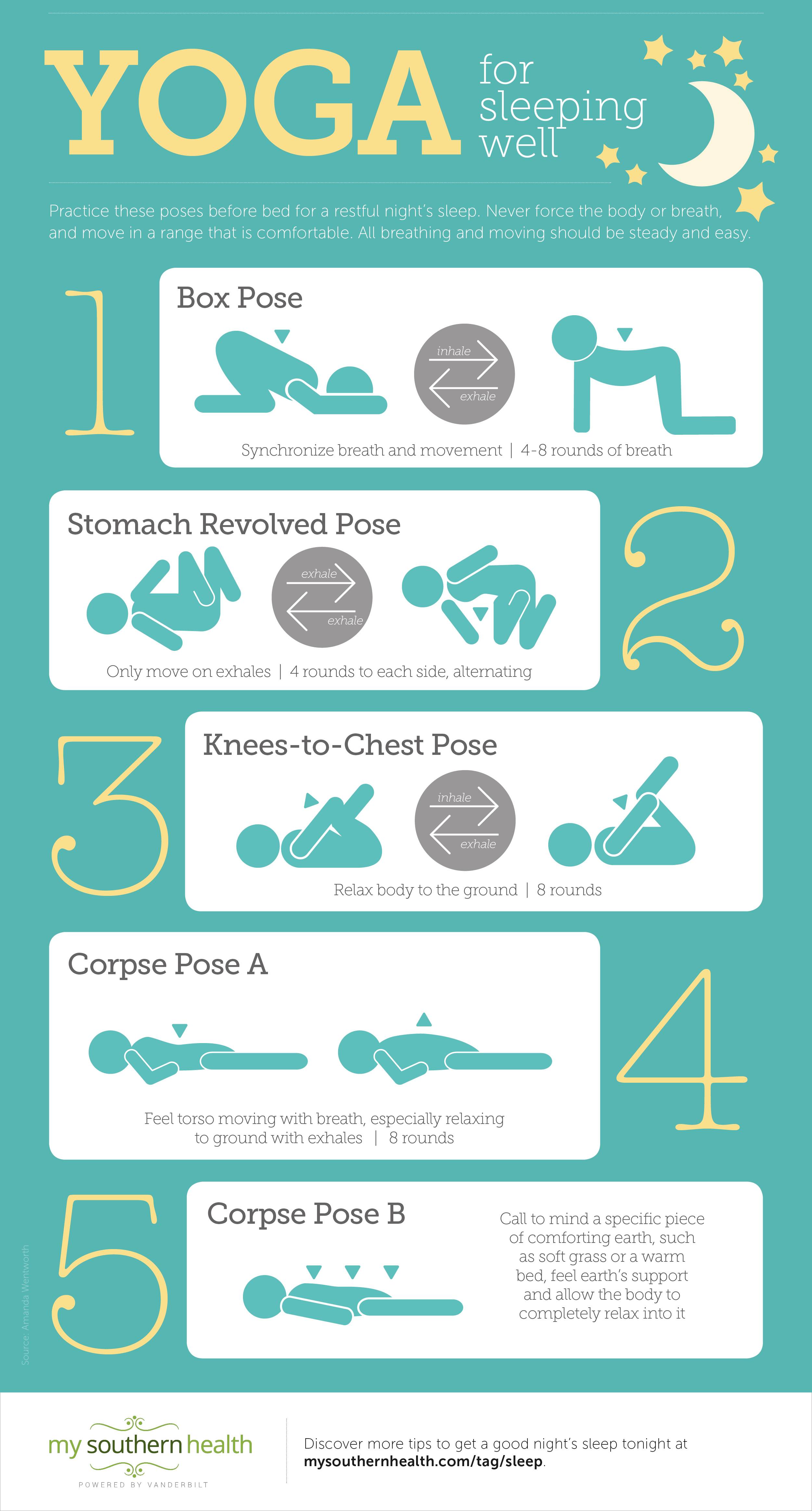
Downward dog is one of the most common and effective yoga poses. This pose is great for stretching the back and neck, and it's especially good for the hamstrings. This pose can also be beneficial for people with high blood pressure. This position is great for digestion and alleviating headaches. This pose is among the most difficult. Be sure to adjust the difficulty according to your physical condition.
Start by putting your feet together. Then, fold your torso under your legs. Keep your knees bent slightly. When first starting out, your hamstrings will feel very cold. Start with a slight bend. Stop when you feel a pinching, shooting pain. Continue the pose for three to four more times, focusing on your breathing. In this position, you should stretch and engage your hips and shoulders. You can do a restorative posture if you're not sure how to align.

This pose requires you to fold your torso under your legs. Next, bend your knees slightly and place the right hand on your right side. When your hips are at the same level as your right leg, lift your left leg and stretch your heels towards the floor. You don't have to touch your floor but you should stretch your legs toward the floor. If your hamstrings are tight, you can bend your knees to facilitate the pose. A folded blanket can be used behind your back to stabilize you and help you get into a parallel stance.
Passive twists are a great way of ending a yoga class. It can be done either with straight or bent legs. You can hold your foot while in this pose to stretch your outer hips. Make sure your knees are in line to your waist. If you do this pose correctly, you will stretch your thighs and hips. This pose should allow you to breathe easily. It can be practiced in a yoga class.
The Cat/Cow stretch is a great stretch that works your core and strengthens your spine. You can expect to see strong abdominal muscles within a few weeks if you practice this stretch for half an hour per days. After you've done all four poses you can move on and try more advanced yoga poses. These poses have many benefits. If you're not sure where to start, you can try a beginners retreat in a yogic center.

Doing a downward dog stretch can help you relax your body and calm your nerves. This is a great method to relax and take your breath during a class of yoga. If you have issues with your knees, it is important to follow the directions of your yoga instructor. The right side of your ear should touch it. Doing a downward-dog stretch on the left side will enable you to reach your cat's head.
FAQ
How do you lose weight?
It can be difficult to lose weight. Many people give up because they don’t know what else to do.
But there are steps you can follow to shed extra pounds.
First, you must ensure you eat fewer calories than you burn. You will gain weight if you eat more calories than you burn.
You should also exercise regularly in order to lose all those calories. You can choose from different types of exercises, including jogging, walking, cycling, dancing, etc.
Third, you need to stop drinking alcohol and smoking cigarettes. These habits can cause you to consume more calories that you would otherwise.
Fourth, cut down on junk food and fatty foods. These can be replaced with healthier options like fruits, vegetables and whole grains.
Fifth, you need to change your lifestyle and adopt new habits. You may have to get up before the rest of the world to exercise.
Sixth, be disciplined and stick to your diet plan.
For those extra calories, you could join a class or go to a gym.
By following these simple tips, you will soon begin to notice results.
Are Cardio exercises good or bad for your health?
Cardiovascular exercise has many benefits. It increases blood circulation, strengthens the heart muscle, boosts stamina, aids in weight loss, and gives you more energy.
Cardiovascular exercise includes running, biking, hiking, swimming, tennis, basketball, soccer, volleyball, football, etc.
It is important that cardio exercises are not performed at high intensities. This could cause injury.
Only do the cardio exercise when you are feeling good.
Don't push yourself beyond what you can handle. Otherwise, you could end up injuring yourself.
It is important to warm up before you begin any cardiovascular exercise. You can then gradually increase your intensity.
Be aware of your body and listen to it. If you feel pain while performing cardiovascular exercise, it is important to stop immediately.
After a cardio workout, it is a good idea to take a break. This gives your muscles the chance to heal.
Cardiovascular exercise is essential for losing weight.
It is the best method to lose calories and reduce belly weight.
What is a good 7-day workout schedule?
Three days per week should be spent on cardiovascular training, including running, biking, swimming, and two strength exercises using free weights, weight machine, as well as one flexibility/core exercise such as yoga, Pilates. Each activity should be done at least once per week. Each session should last no more than 45 minutes.
Cardiovascular Exercises: Swimming, Cycling, Running
It is important to complete at least 60 minutes of cardio per week. Aim for 75 minutes per week to get the best results. Cardio exercise can improve blood flow and stimulate muscle development.
Strength Training
Cardio exercises target the heart, lungs and muscles. Strength training targets the muscles, tendons and bones. Strength training helps you burn calories even while resting.
Flexibility & Core Workouts
Your whole body will be stronger if you have flexibility and core training. Both yoga as well as Pilates are great choices.
What are the best foods to avoid when trying weight loss?
Avoid trans fats. Trans fats can increase LDL (the negative) cholesterol levels and decrease HDL (the positive) cholesterol.
Trans fats are found in deep-fried foods, fast food, packaged baked goods, snack cakes, and other processed foods.
These unhealthy fats also contribute to inflammation, leading ultimately to heart disease or diabetes.
Avoid foods containing artificial sweeteners. Artificial sweeteners are linked to an increased risk of cancer.
They are found in everything, from soft drinks to chewing tobacco to candy bars. They appear in many other foods, including meat, poultry, fish, and eggs.
Artificial sweeteners include saccharin, cyclamate, sorbitol, aspartame, acesulfame-K, and sucralose.
The American Heart Association advises against using these chemicals, as they could damage DNA.
Egg is good for you?
All nutrients are contained in the egg. It supports strong bones, healthy heart, lungs, and stable blood sugar.
Eggs are a good source of protein and vitamins A, B12, D, E K, calcium, phosphorus iron, zinc copper, magnesium selenium and even riboflavin.
The egg yolk has high cholesterol. However, it doesn't contain saturated fat. Eggs have less saturated fat than many other foods.
They are also low in calories and sodium. You can make them in any way you like. You can fry, poach, scramble, boil, hard-boil, and bake them.
They are very healthy and simple to make.
You should eat at least two whole eggs per day. You can add eggs to your diet if you don't like eating eggs.
Essential nutrients are provided by eggs. You can add eggs to your daily diet now.
Statistics
- Are You One of the 20% of Guys (mh.co.za)
- 10 pounds in a month is likely during a lean bulking phase, especially for beginners. (muscleandstrength.com)
- According to the American Academy of Dermatology (AAD), men over 50 are at a heightened risk of developing it. (healthline.com)
- An estimated calorie range for moderately active adult males falls between 2,200 to 2,800 calories per day, depending on age. (eatright.org)
- Cardmembers earn 5% Back at Amazon.com with a Prime Credit Card. (amazon.com)
External Links
How To
How do I lose weight while working out?
Exercise burns calories by increasing metabolism and oxygen consumption.
Exercise at a moderate intensity to safely lose weight.
These are the top tips for burning fat while you exercise.
-
Cardio exercises include walking, running, swimming, cycling, running and jogging.
-
Do 30 minutes of exercise three times a week.
-
Strength training is a great way to lose weight.
-
Avoid intense training. It's possible to build muscle, but not lose it.
-
When exercising, make sure to drink lots of water. Water is essential for flushing out toxins and keeping your body hydrated.
-
After exercising, consume low-fat protein smoothies. Protein shakes help repair muscles and boosts energy.
-
Smaller meals are better for you.
-
Don't skip breakfast! Skipping breakfast can lead to fatigue and sluggishness.
-
Take care of yourself mentally. Stressful situations can slow your metabolism.
-
Keep a positive attitude. Studies show that people who believe they are overweight gain more weight then those who think they are attractive.
-
Get enough sleep. A lack of sleep makes it difficult to lose fat.
-
Stay active. Move around at least once an hour.
-
Maintain a healthy diet. Eat right to feel satisfied and full for longer.
-
Find ways to relax. A tense mind doesn't allow your body to release stress hormones that break down muscle tissue.
A balanced diet contains all necessary nutrients for growth and development.
Six small meals per day is better than three large meals. This gives your body the time it needs to process what you've eat.
You need about 500 milligrams of calcium daily to maintain strong bones. Calcium can be found as a dairy product such as milk, yogurt and fortified soy drinks, orange juices, cereals, breads, and cereals.
Calcium is found in green leafy vegetables, beans, tofu, seeds, nuts, and cheese.
Vitamin D is required for calcium absorption. Vitamin D is found in certain fortified foods, such as egg yolk and fatty fish.
Vitamin E plays an important role in skin health. It can be found as a vegetable oil, wheat germ, peanuts or almonds.
Your body needs zinc for normal immunity function and wound healing. Zinc can be found in seafood, legumes and meats.
Zinc deficiency could cause fatigue, nausea, vomiting, and depression.
Sugar intake can lead to insulin resistance which causes blood glucose levels to rise. Insulin resistance leads to weight gain.
When there is a high level of free radicals, insulin resistance can develop. Free radicals can be molecules with unpaired electrons that cause damage to cell membranes.
The most common sources of free radicals include food additives.
Free radical damage can lead cancer, heart disease or diabetes, arthritis, asthma, or other forms of aging.
The best way to avoid free radicals is to eat a balanced diet high in antioxidants. Antioxidants protect against oxidative damage.
Antioxidant vitamins include Vitamin C (found in citrus fruits), beta carotene (found in carrots, sweet potatoes, spinach, broccoli, cantaloupe, apricots, squash, mangoes, peaches, peppers, tomatoes, cabbage, cauliflower, kale, Brussels sprouts, collard greens, watermelon, and strawberries), and Vitamin E (found in nuts, olive oil, avocados, and eggs).
Selenium, copper as well as manganese and zinc are some other antioxidant nutrients.
Selenium protects cells against oxidative damage from free radicals. Selenium can be found in Brazil nuts and liver, kidneys, liver, kidneys, shrimp, cod, turkey and lamb as well as chicken.
Copper protects the brain and eyes as well as the lungs and red blood cells. Copper can be found in meat, shellfish, meat, and organ meats.
Manganese plays an important role in bone structure. Manganese is found as a component of bone structure in brown rice (spinach, bananas), prunes, raisins and oatmeal.
Zinc helps with normal growth, reproduction, as well as wound healing. Zn is found in lean cuts of meat, white fish, poultry, and eggs.